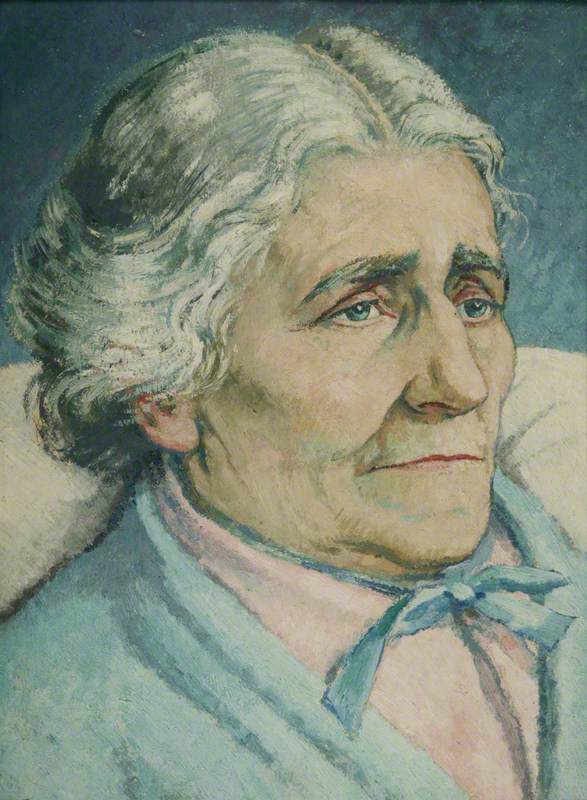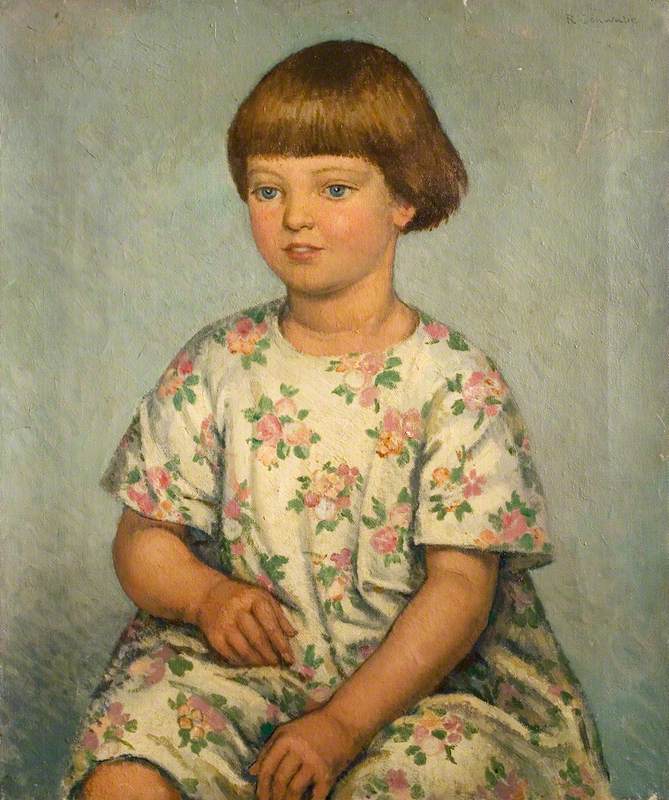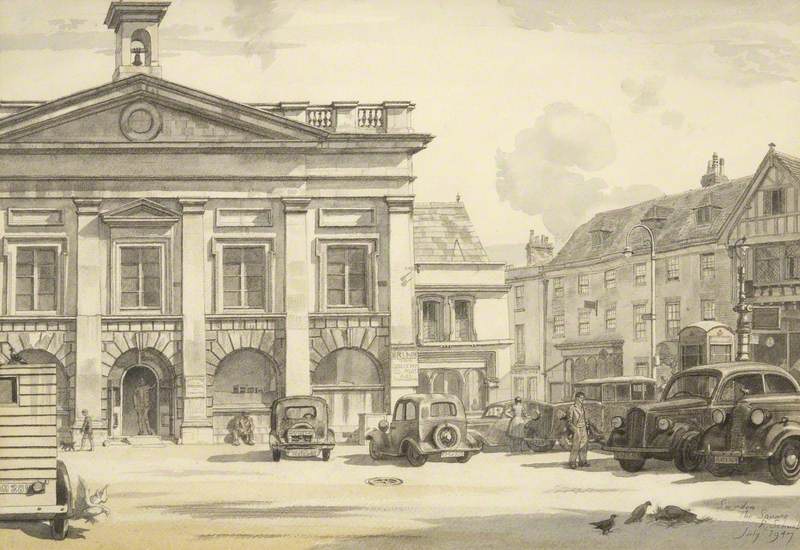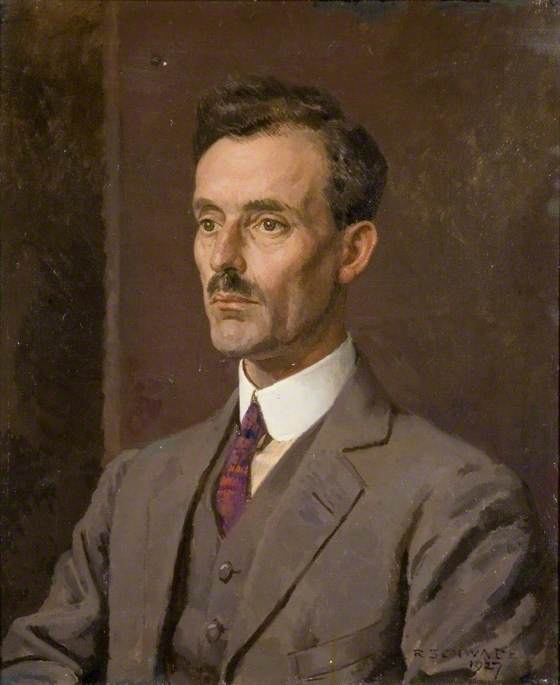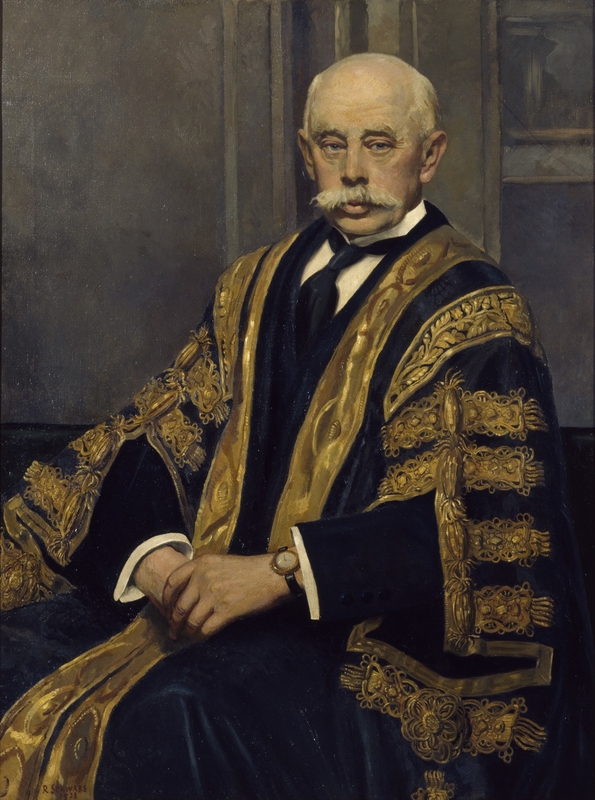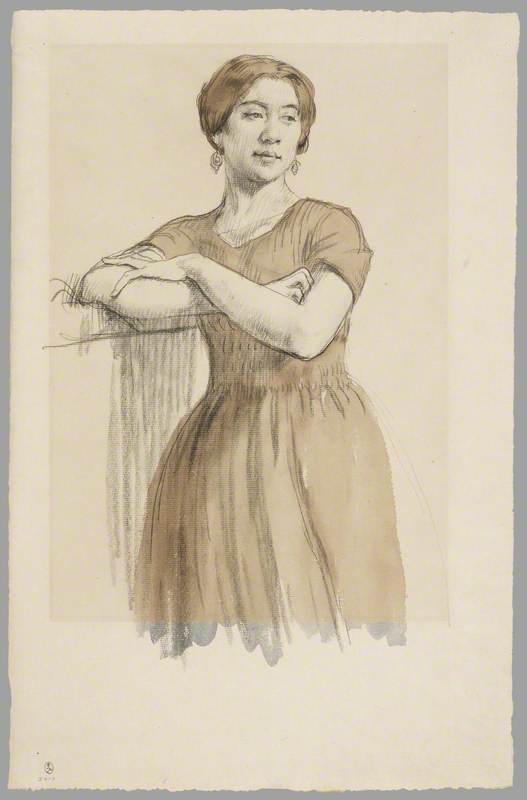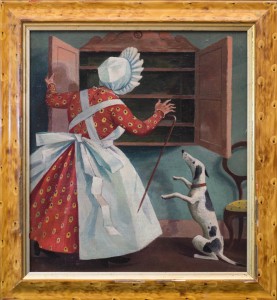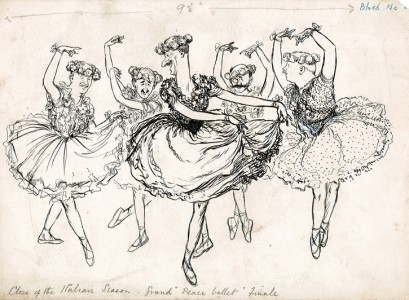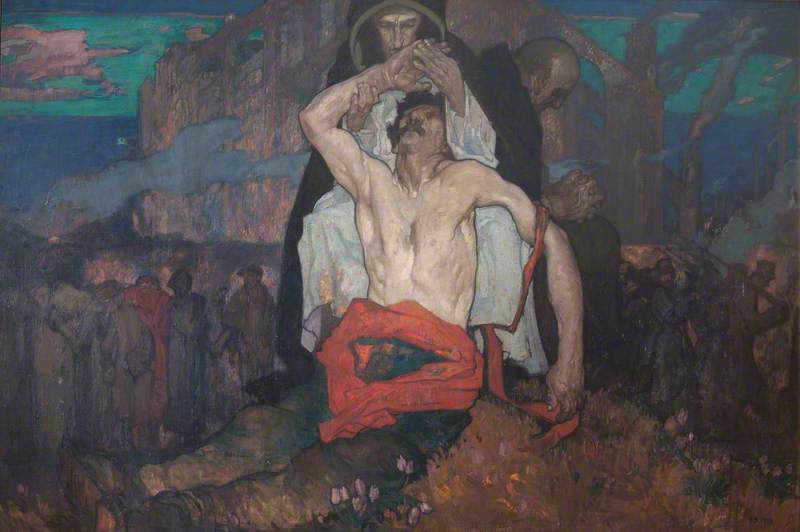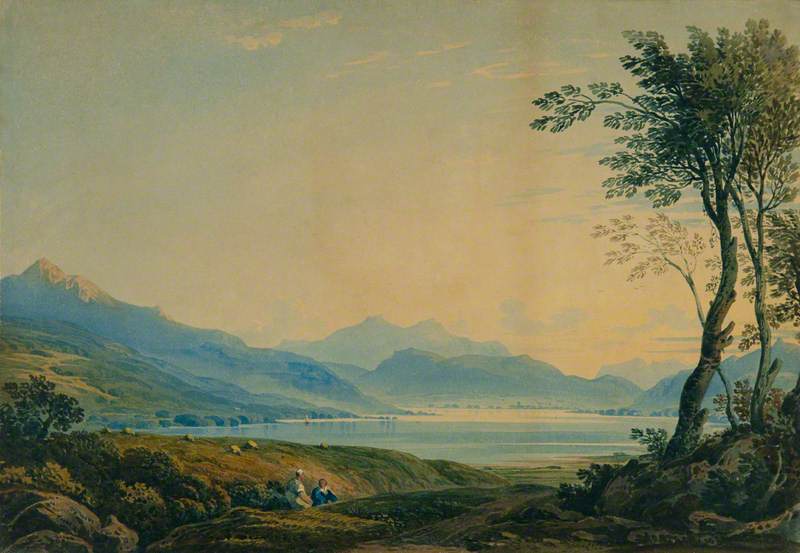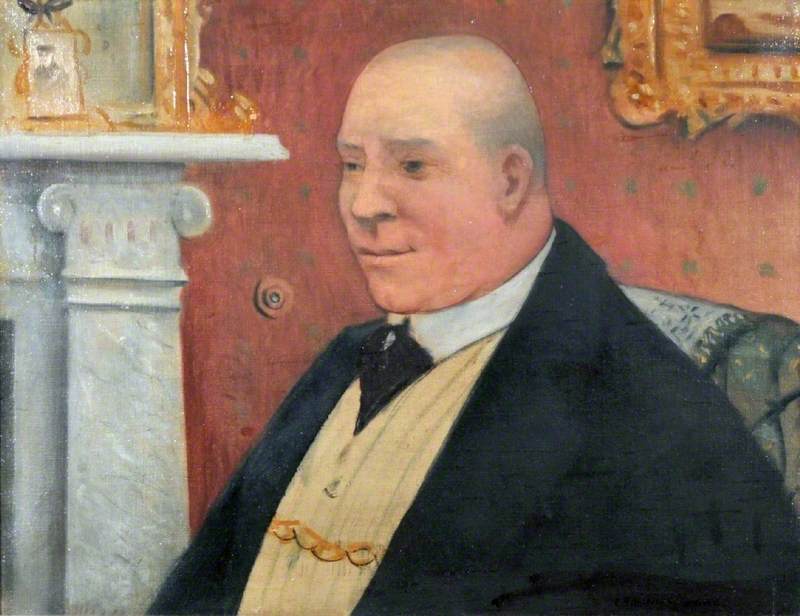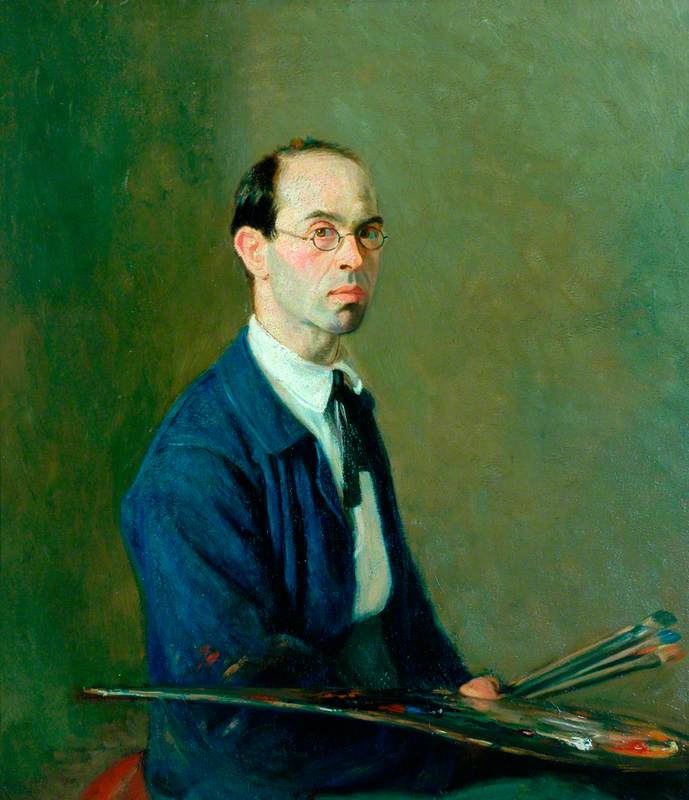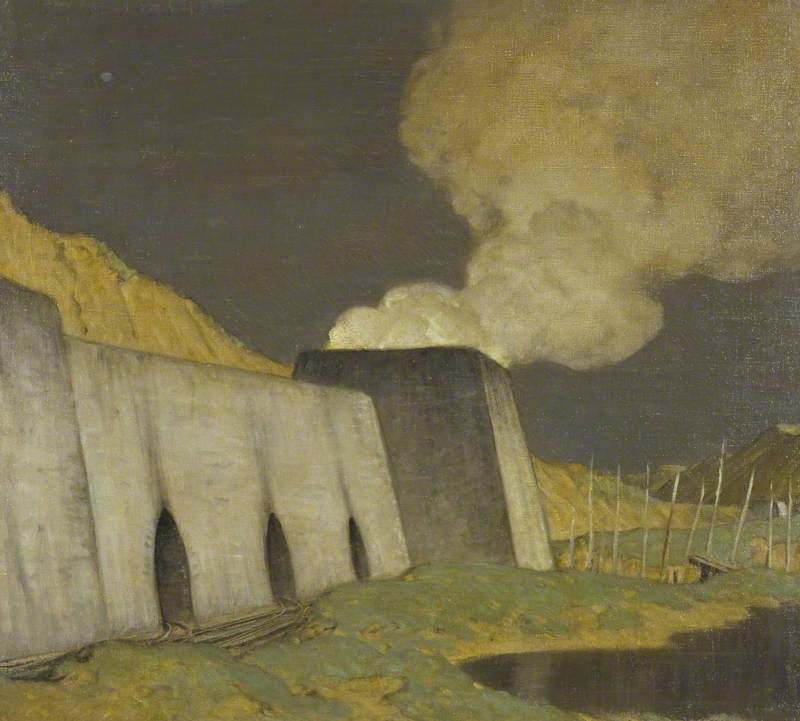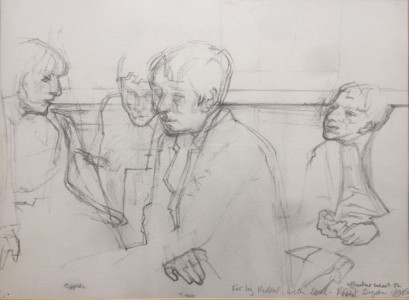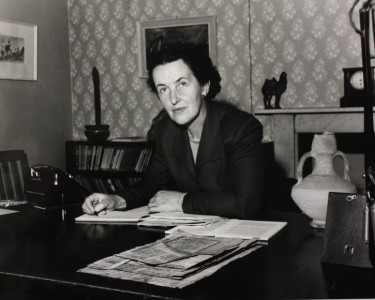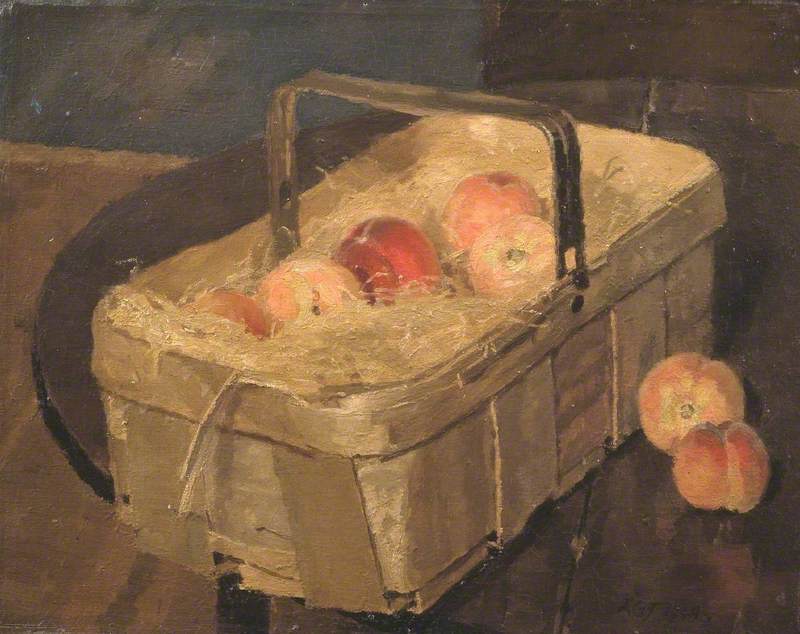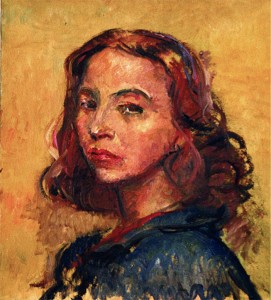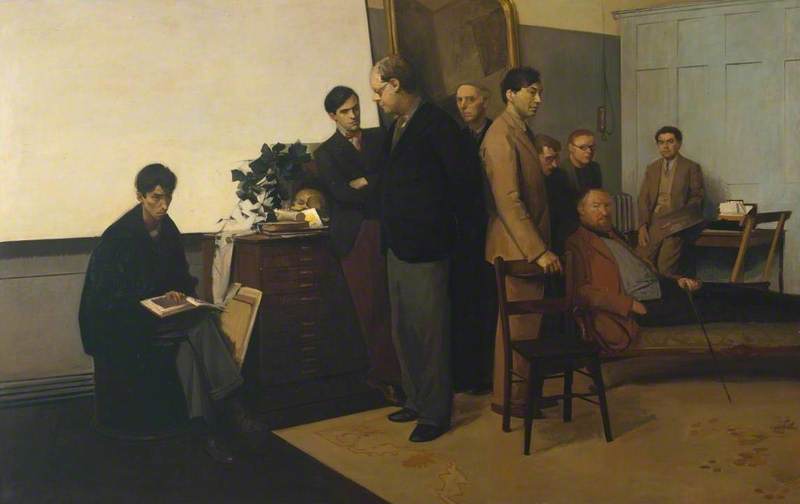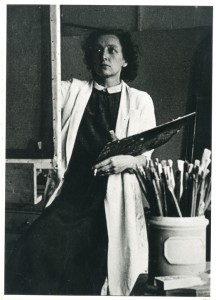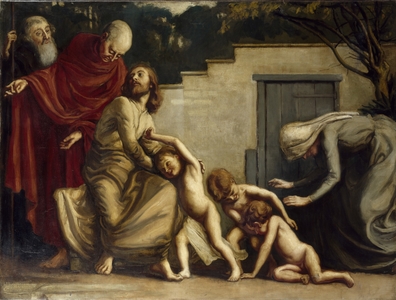Randolph Schwabe was 'a scholarly artist', meticulous draughtsman and an influential teacher. His ceaseless delight and interest in all that surrounded him meant that he was seldom without a sketch book and sharp pencil poised, or a pen charged with his specially made brown Stephens' ink. Whatever the medium, his approach was one of thoroughness and acute perception. Such an approach is reflected in his paintings represented on Art UK.
This is particularly evident in his early prize-winning composition Suffer the little children to come unto me (UCL Art Museum, University College London), completed in 1905 when a student at the Slade School of Art. Schwabe shared the £25 award for the best Summer Composition with Ian Strang. Of all the prizes this was the most prestigious – it was seen as the final test of a student's accomplishment. Schwabe studied at the Slade from 1900 to 1906, having transferred from the Royal College of Art after what he described as three 'inglorious and unhappy months'.
Also in the UCL collection is Schwabe's portrait of the eminent physician and past president of the Royal College of Physicians of London Sir John Rose Bradford (1863–1935).
Schwabe completed this posthumous portrait (from a photograph) in 1938 while Professor and Principal of the Slade – a post he had been appointed to in 1930 following the retirement of Henry Tonks. Schwabe worked intermittently on the portrait over several months and completed it in early October 1938.
Schwabe's two oil paintings of women's wartime work, completed during 1918–1919, are important documentary records and worthy of detailed comment. Schwabe was contacted in March 1918 by Alfred Yockney, from the Ministry of Information, to ascertain if he were free of military obligations and could put aside any private work to undertake work for the Ministry. Schwabe agreed (he had been rejected for service in the armed forces owing to his weak heart, frail physique and uncertain health), and was subsequently employed as an official war artist. He was tasked with undertaking a series of drawings and paintings of 'Women on the Land'.
The Women's Land Army and German Prisoners
1918
Randolph Schwabe (1885–1948) 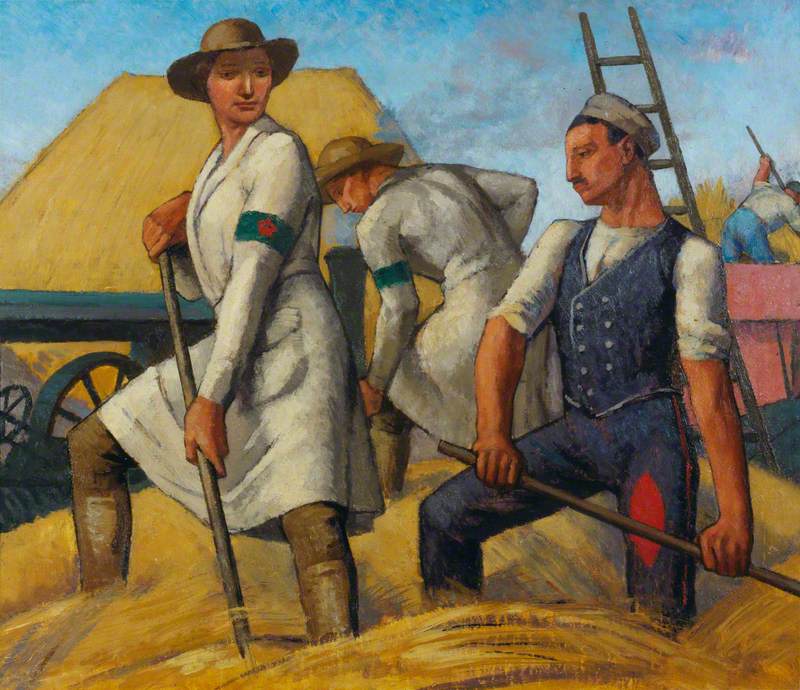
The Women's Land Army and German Prisoners was the first painting Schwabe completed as a war artist. He records German prisoners of war assisting Land Girls with making a straw stack after the corn has been threshed in the late summer of 1918, probably at Rushden Farm, some three miles from Podington, Northamptonshire. The composition is noteworthy, particularly the close proximity of the Land Girl to the German soldier, as the Government had prohibited their working alongside Land Army women, and the LAAS (Land Army Agricultural Section) Handbook required recruits to promise 'to avoid communication of any sort with German prisoners'. Prisoners of war were an important source of labour during the last two years of the war. The number of them employed increased markedly and, by autumn 1918, 30,000 were gathering in the harvest.
Voluntary Land Workers in a Flax Field, Podington, Northamptonshire
1919
Randolph Schwabe (1885–1948) 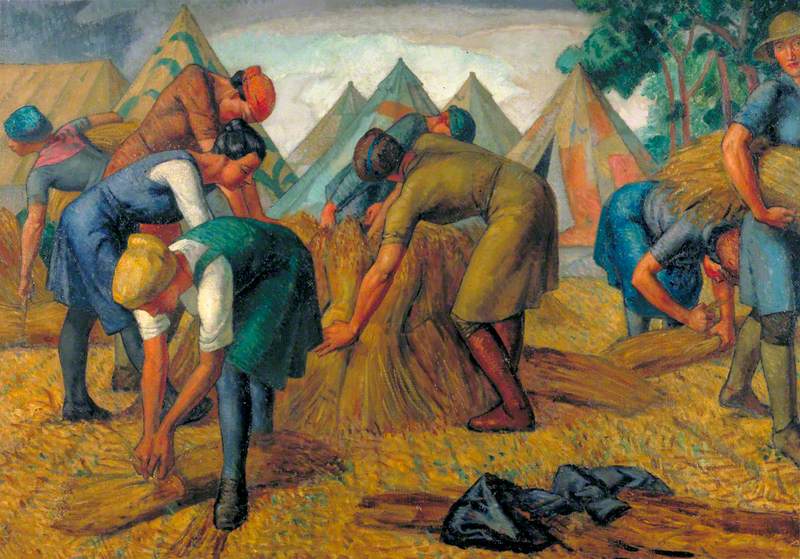
As part of Schwabe's commission he completed a large painting entitled Voluntary Land Workers in a Flax Field, Podington, Northamptonshire in a studio on Kings Road, Chelsea. The flax camp was in Podington, one of several in Northamptonshire, as flax culture had been revived to supply the demands of aeroplane manufacture and specifically fabric to cover the aircraft's wings. Schwabe shows women tying the flax plants in small sheaves by twisting a few stems round them just below the seed bolls, while others stook them in much the same way as wheat. In the background is their camp of old army camouflaged bell tents supplied by the War Office, in which seven girls would be accommodated for about two months – the women being under semi-military discipline.
Both oil paintings form part of the Imperial War Museums collection.
Schwabe gradually gave up painting in oils and concentrated more on drawing with pen, pencil and watercolour.
Dr Gill Clarke, Visiting Professor at the University of Chichester
